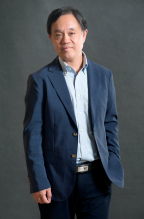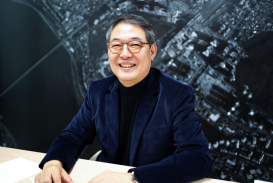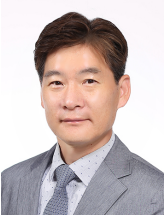Important Date:
April 1st, 2022
Call for abstract submission
May 20th, 2022
Deadline for accepting paper abstracts
June 25th, 2022
Inform the author of the accepted paper abstract to submit full paper
July 20th, 2022
Deadline for accepting papers
December 1-2nd, 2022
Conference date
Healthy City Forum Speakers
v Xue Kongkuan, ASC Council Member, Director of Committee of Ecological Habitat-ASC
v Chen Hong, Professor and PhD Student Tutor, School of Architecture and Urban Planning, Huazhong University of Science and Technology
v Toshiharu IKAGA, AIJ Vice President, Professor of Keio University
v Aya KUBOTA, Project Researcher of Tokyo University
v Kim, Donyun, Professor of SungKyunKwan University
v Moon, Hyeun-Jun, Professor of Dankook University

Xue Kongkuan
ASC Council Member, Director of Committee of Ecological Habitat-ASC
Presentation Title: Theoretical Practice and Future Prospects of Urban and Rural Ecological Habitat Construction
|
Abstract:It has been nearly three years since the COVID-19 pandemic spread globally in 2019, and the construction and development of urban and rural living environments are facing severe challenges. How can the urban and rural living environment in the future be more adaptable to human needs and sustainable development? Based on the current situation of China’s urban and rural development, this article lists some typical cases that have been implemented in the construction of various ecological human settlements over the past 20 years through the elaboration of the source of the definition of ecological human settlements, the basic theoretical basis, and the implementation of technical approaches. It helps explain the characteristics of urban and rural ecological human settlements construction, and sorts out the current situation and future development trends of China’s urban and rural human settlements construction. Meanwhile, through analyzing the relationship between the concepts of ecology, green and health, the inevitable future of harmonious coexistence between man and nature, and the natural ecological health as the basic guarantee for the health of the human settlement environment, this article demonstrates that the construction of urban and rural ecological human settlements will surely gain consensus in the industry and become the leading direction and ultimate goal of future urban and rural construction.
|

Chen Hong
Professor and PhD Student Tutor, School of Architecture and Urban Planning, Huazhong University of Science and Technology
Presentation Title: The study of relationship between urban form and exposure risk of traffic pollutants in residents
|
Abstract: Exposure to PM2.5 and CO has been proven to be closely related to physical health. Since 2012, they have been added to the pollutant list for national monitoring in Wuhan. However, the fine-scale variation in pollution, especially at the street level, is complex and requires further exploration. In the study, the measurement and numerical simulation methods are used to study on relationship between diffusion process of traffic pollutants (PM2.5 and CO) and the spatial form and the building shape on both sides of the valley, and to analyze the diffusion mechanism of pollutants in adjacent blocks. From the perspective of exposure risk assessment, the exposure risk sensitivity of human body in street valleys and adjacent blocks is judged, the parameter range of block morphology that is conducive to traffic pollutant control is summed up and the type of street and valley that is not recommended, and a reasonable design strategy for reference is proposed.
|

Toshiharu IKAGA
AIJ Vice President, Professor of Keio University
Presentation Title: Development and Validation of Regional Environment Assessment System for Promotion of Healthy City
|
Abstract: Population aging is accelerating in many developed countries and there are growing concerns about increasing social security costs. Given this background, as stated in the Japanese Growth Strategy, community that can sustain citizens’ lifelong health and active living is required. Therefore, this study aims to develop a healthy community checklist based on citizens’ consciousness and behavior survey to recognize the condition of their community and notice the risk factor of disease. Based on the answer of the respondents, the score for a community was calculated and verified the effectiveness of this tool. As the result, the relationship between overall community score and citizens’ health condition was quantified. Furthermore, the result showed a significant relationship between the community environment and the personal health, even in the case of considering personal lifestyle.
|

Aya KUBOTA
Project Researcher of Tokyo University
Presentation Title: Toward Urban Planning Different from that Preceding the Nuclear Power Plant Accident
|
Abstract: It is evident by looking at the region affected by the Fukushima nuclear power plant accident that pre-accident urban planning has been applied even after the accident. However, zoning for evacuation orders and cancellations cannot control radioactive substances that have no thresholds. Even in areas where evacuation orders have been lifted, some people naturally do not wish to return, and the number of returnees is limited. Despite this situation, residents in some places form organizations to mow the weeds around still-vacant homes, and people in some villages are undertaking the sixth industrialization of rape blossoms. These are spontaneous and practical initiatives (“natural practices”) which no one is forcing on them. However, the immense quantities of radioactive materials existing in transcendence of time and space are impossible to control. Reactor decommissioning work is also extremely difficult. Since the nuclear accident we need to understand that urbanization has progressed beyond anything that is internal or external to cities, while implosion occurs inside the human body and explosion occurs in the hinterland. Our only choice is to stop the hitherto implemented urban planning that has been uprooting people, and honor the act of protecting habitus by each person concerned.
|

Kim, Donyun
Professor of SungKyunKwan University
Presentation Title: Healthy City: a new city model for next generation
|
Abstract: Healthy cities create paths of sustainable development for future generations. The cities we live in today are products of technologies accumulated from the past fused with cutting-edge technologies of the present. In fact, cities have always sought for solutions to the challenges, becoming ‘smart cities’ of the times as they utilized available knowledge new technologies. In this context, the creative challenge of the last industrial revolution merits attention. During this time, the electricity – a key new technology of the time – was incorporated into existing architecture and cities. This has built the foundation which then transformed people’s lifestyles completely and led to prosperity of new civilization and culture. The ‘modern city model’ envisioned cities and people’s lives in the future in detail by incorporating the cutting-edge industries and technologies into architecture. The last century was a journey that realized this envisioned future, and the result is the cities we live in today. However, the modern city model depends excessively on carbon-based fuels. We face climate change crisis after a century of developing modern cities and increasing carbon emissions. Today, our cities are undergoing digital transformation while also responding to COVID-19 crisis. This situation is surprisingly similar to the last industrialization period during the Spanish Flu, during which tens of millions died. At the time, many alternatives have been proposed to address urban issues, and the ‘modern city model’ – the smart city model of the times – emerged as the answer. The key to overcome the urban issues of this century is also a new city model. The best new technologies for sustainable development and people’s healthy life can be brought together on a city planning platform to create a new city model for the future and contribute to climate change response. As always, cities need to become the hope for future generations. As always, as the origin of new civilizations and cultures, cities need to become the hope for future generations.
|

Moon, Hyeun-Jun
Professor of Dankook University
Presentation Title:Intelligent building energy and environment management(iBEEMS) for residential buildings using reinforcement learning
|
Abstract: Reduction of energy consumption in buildings is crucial to achieving the target of greenhouse gas emissions in each country. However, maintaining an appropriate indoor healthy environment is also inevitable for occupants’ comfort and productivity. Although energy saving and good indoor air quality cannot be achieved at the same time, a new method for building system control can be implemented by using a data-driven model with machine learning technology. This paper suggests an intelligent building energy and environmental management system(iBEEMS) for residential and commercial buildings. In this paper, a specific machine learning method, which is one of reinforcement learning, is tested. The new control algorithm utilizes DDQN(Double deep Q network) along with an occupants activity model in the built environment. Energy consumption data from a mechanical ventilation system and an air-conditional system are fed to the reinforcement learning model. Indoor environmental factors are also used to establish the model, including temperature, relative humidity, CO2 concentrations, PM10, and PM2.5 concentrations. The performance of the DDQN model was tested in a living testbed that resembles a small residential home with two beds, a living room, and a kitchen. The results confirm that the suggested control method can improve indoor air quality and reduce energy consumption from mechanical systems at the same time. This approach also considers various occupants’ activities, including sleeping, workout, rest, cooking, and so on. Based on the prediction of occupants’ activities, a customized indoor environmental system control can be provided to satisfy indoor air quality and energy saving. Detailed results and discussions are provided in the manuscript.
|

